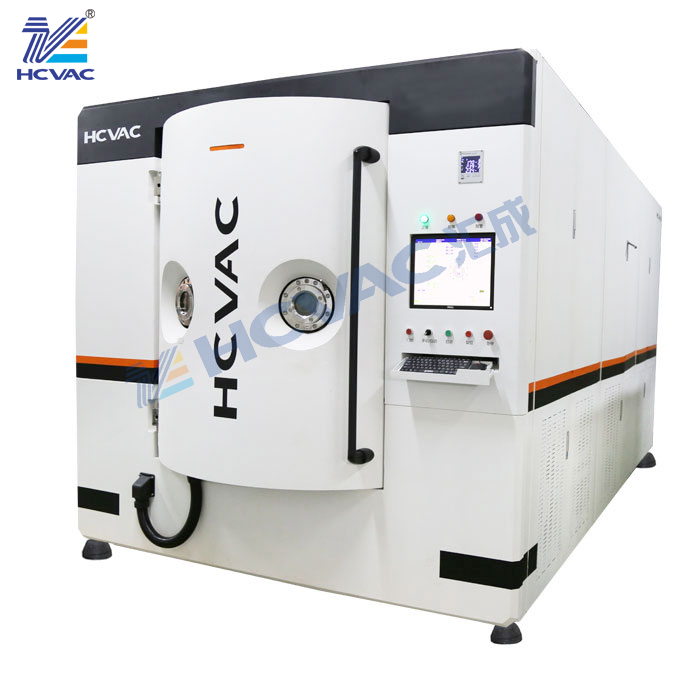


News centres
Magnetron sputtering technology is used in magnetron sputtering vacuum coating machine, but in the coating process, flameout often occurs, commonly known as poisoning. Then why does the target poisoning appear and what causes it? Let me introduce it to you in the hope of helping you.

First, the formation of target metal compounds.
Where is the compound formed in the process of forming the compound from the metal target surface by reactive sputtering? Because the active reaction gas particles collide with the target surface atoms to generate chemical reaction to generate compound atoms, which is usually an exothermic reaction, the heat generated by the reaction must be conducted out, otherwise, the chemical reaction cannot continue. It is impossible to conduct heat conduction between gases under vacuum, so chemical reaction must be carried out on a solid surface. The sputtering products are carried out on the target surface, substrate surface and other structural surfaces. It is our goal to generate compounds on the substrate surface, while it is a waste of resources to generate compounds on other structures. At first, generating compounds on the target surface is the source of providing compound atoms, and later it becomes an obstacle to continuously providing more compound atoms.
Second: the influencing factors of target poisoning.
The main factor affecting target poisoning is the ratio of reactive gas to sputtering gas, and excessive reactive gas will lead to target poisoning. In the process of reactive sputtering process, the sputtering channel area on the target surface is covered by reaction products or stripped to re-expose the metal surface. If the rate of compound formation is greater than the rate of compound stripping, the compound coverage area increases. Under a certain power, the amount of reaction gas involved in compound formation increases, and the compound formation rate increases. If the amount of reactant gas increases excessively, the compound coverage area will increase. If the reactant gas flow rate cannot be adjusted in time, the rate of compound coverage area increase will not be restrained, and the sputtering channel will be further covered by the compound. When the sputtering target is completely covered by the compound, the target will be completely poisoned.
Third: target poisoning.
(1) positive ion accumulation: when the target is poisoned, an insulating film is formed on the target surface. when the positive ions reach the cathode target surface, they cannot directly enter the cathode target surface due to the blocking of the insulating layer, but accumulate on the target surface, which is easy to produce cold field-induced arc discharge-arcing, which makes cathode sputtering impossible.
(2) Anode disappearance: When the target is poisoned, an insulating film is also deposited on the grounded vacuum chamber wall, and electrons reaching the anode cannot enter the anode, resulting in anode disappearance.
Fourth: the physical explanation of target poisoning.
(1) Generally, the secondary electron emission coefficient of metal compounds is higher than that of metal. After the target is poisoned, the surface of the target is all metal compounds. After being bombarded by ions, the number of secondary electrons released increases, which improves the space conduction ability and reduces the plasma impedance, resulting in a decrease in sputtering voltage. Thereby reducing the sputtering rate. Generally, the sputtering voltage of magnetron sputtering is between 400v and 600v, and when target poisoning occurs, the sputtering voltage will be significantly reduced.
(2) The sputtering rate of metal target is different from that of compound target. Generally, the sputtering coefficient of metal is higher than that of compound, so the sputtering rate is low after target poisoning.
(3) The sputtering efficiency of reactive sputtering gas is inherently lower than that of inert gas, so the comprehensive sputtering rate decreases when the proportion of reactive gas increases.
Magnetron sputtering vacuum coating machine, target poisoning is very unfavorable for coating, which will cause many unnecessary failures and losses. Because of the solution to poisoning, coating experts have also developed a set of solutions to prevent target poisoning, so as to solve this problem, and will give you a detailed introduction next time.